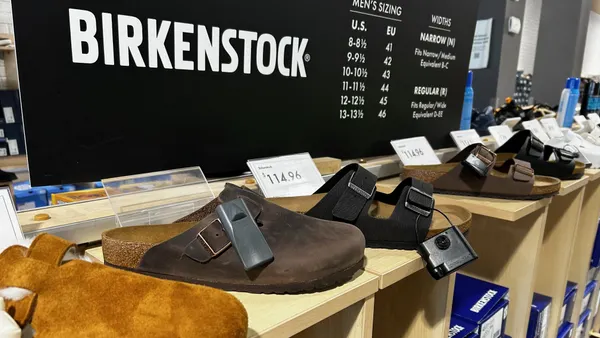Dive Brief:
-
In his annual letter to shareholders, Amazon founder and CEO Jeff Bezos said Wednesday that the e-commerce giant remains on Day 1 in its evolution, warning that “Day 2 is stasis. Followed by irrelevance. Followed by excruciating, painful decline. Followed by death. And that is why it is always Day 1.”
-
Number one in avoiding Day 2 thinking is an all-consuming obsession with the customer experience, Bezos continued. “You can be competitor focused, you can be product focused, you can be technology focused, you can be business model focused, and there are more. But in my view, obsessive customer focus is by far the most protective of Day 1 vitality.”
-
Yet in determining what customers want, surveys and beta testing are often secondary approaches, Bezos said, pointing to Amazon's Prime shipping and services program as an example. “No customer ever asked Amazon to create the Prime membership program, but it sure turns out they wanted it, and I could give you many such examples,” he said. “A remarkable customer experience starts with heart, intuition, curiosity, play, guts, taste. You won’t find any of it in a survey.”
Dive Insight:
Retailers for two decades have grappled with the impact of Amazon, not just on sales but also on customer expectations and behavior. The e-commerce pioneer continues to loom large, vexing rival retailers lacking the kind of cushion Amazon enjoys thanks to its lucrative web services unit, which provides profits that allow Bezos and his team to maintain a long-term view.
That long-term view is still evident in Bezos’s letter. With all his discussion of machine learning and artificial intelligence — two innovations he says are integral to the company’s core operations and key features of its Amazon Web Services platform — Bezos made clear that Amazon’s customers are always the focal point. This would be no surprise to many, including the third-party sellers on its own marketplace.
Bezos also offered insights into his leadership philosophy, arguing that Day 1 organizations eschew a one-size-fits-all decision-making process while recognizing true misalignment issues early and escalating them immediately. “When we decided to invite third-party sellers to compete directly against us on our own product detail pages — that was a big [misalignment],” Bezos writes. “Many smart, well-intentioned Amazonians were simply not at all aligned with the direction. The big decision set up hundreds of smaller decisions, many of which needed to be escalated to the senior team. ‘You’ve worn me down’ is an awful decision-making process. It’s slow and de-energizing. Go for quick escalation instead — it’s better.”
Amazon Marketplace has paid off handsomely, of course. As of late last year, half of all merchandise sold on Amazon’s site now comes from third-party sellers, small businesses and entrepreneurs.
“Amazon’s North Star is the consumer, not the seller. If there’s a collision of the two things, they'll choose the consumer,” Scot Wingo, founder and executive chairman of e-commerce firm ChannelAdvisor, which works with a range of Amazon Marketplace third-party vendors, has told Retail Dive. “Everyone talks about the customer, but I’ve never seen anyone walk the walk like Amazon does.”














